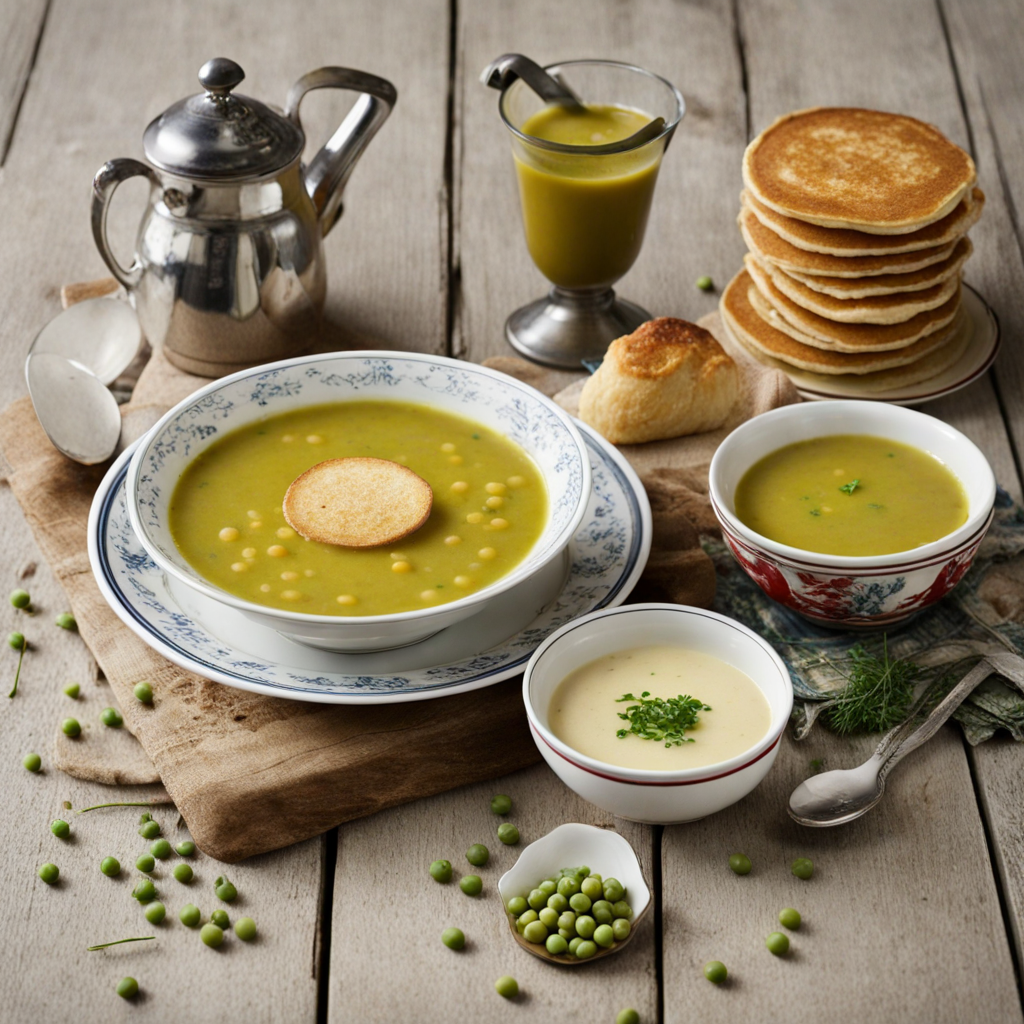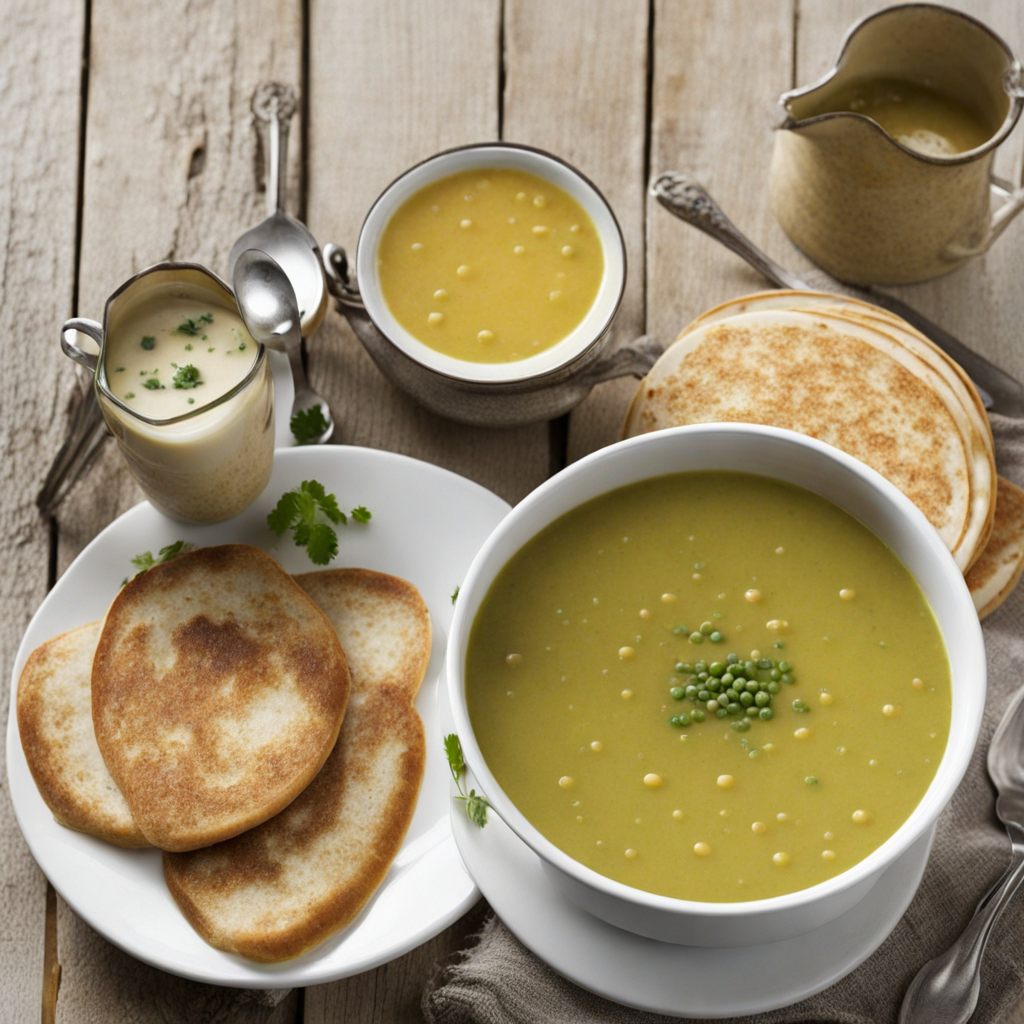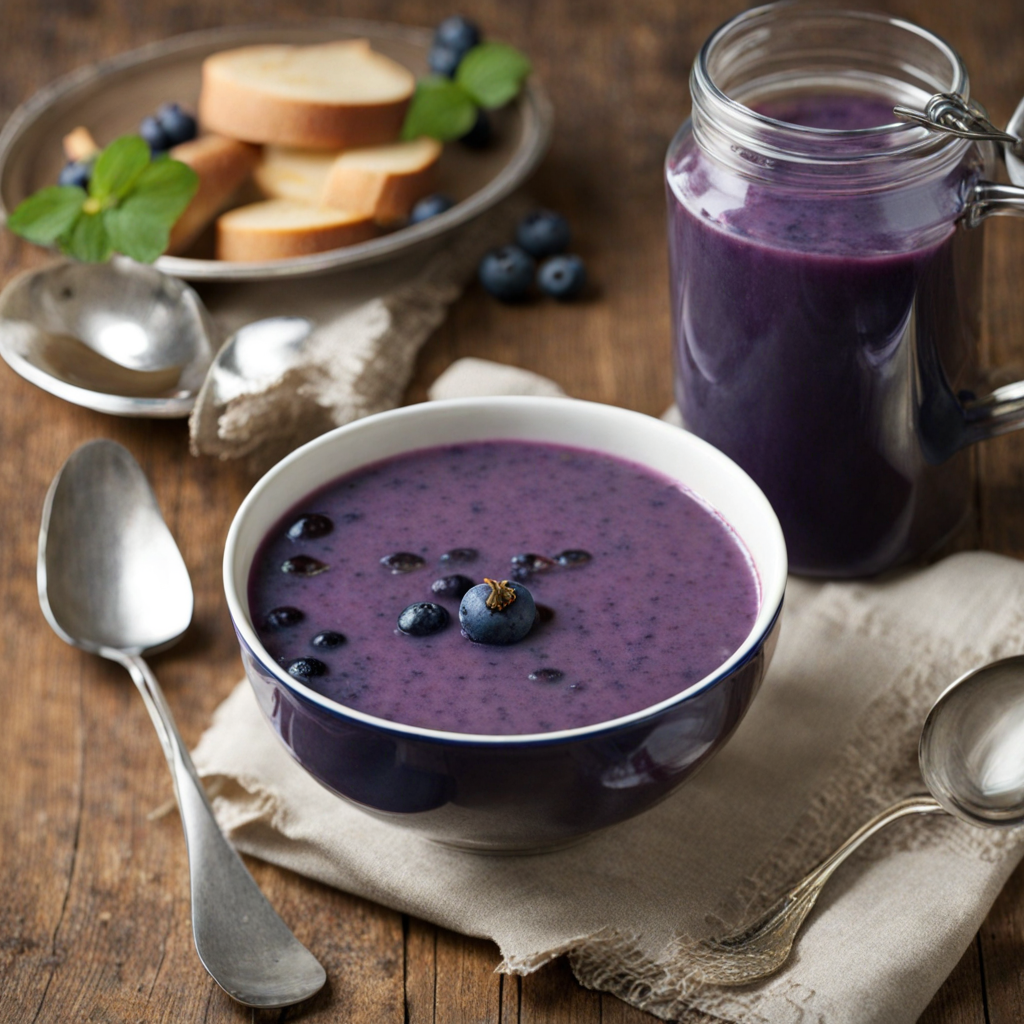Pea Soup
Pea soup, or "ärtsoppa" as it's known in Sweden, is a traditional dish that has been enjoyed for centuries, particularly on Thursdays. This hearty soup is primarily made from yellow peas, which are simmered until they become tender and creamy. The soup is often flavored with a variety of seasonings, including thyme and bay leaves, and sometimes includes a touch of mustard for an extra kick. The rich, earthy flavor of the peas is complemented by the addition of smoked pork or ham, which adds a savory depth to the dish, making it both filling and satisfying. In addition to its rich taste, pea soup is known for its vibrant yellow-green color, which is visually appealing and comforting. The texture is thick and velvety, making it perfect for dipping crusty bread or rye bread. It's common for Swedes to enjoy their pea soup with a dollop of mustard, which enhances the flavor and adds a tangy contrast to the sweetness of the peas. This combination creates a delightful balance that keeps you coming back for more. Pea soup is often served as part of a traditional Swedish meal, often accompanied by a side of pancakes and lingonberry jam for dessert. This unique pairing not only highlights the versatility of the soup but also offers a taste of Swedish culinary culture that celebrates both savory and sweet flavors. With its simple ingredients and comforting nature, pea soup is an essential part of Sweden's food heritage, inviting anyone who tries it to experience a warm and welcoming dish that embodies the spirit of Swedish home cooking.
How It Became This Dish
The Engaging History of Ärtsoppa: Sweden's Beloved Pea Soup Ärtsoppa, a dish synonymous with Swedish culinary tradition, is a hearty pea soup typically made from yellow peas, onions, and a smoky meat such as pork. Often served on Thursdays, this dish not only satisfies the palate but also carries with it a rich tapestry of history, cultural significance, and culinary evolution. To understand Ärtsoppa is to delve into the very essence of Swedish communal life, agricultural practices, and social customs. #### Origins: A Simple Yet Nutritious Meal The origins of Ärtsoppa trace back to the Middle Ages, when peasants across Europe relied on legumes for sustenance. In Sweden, yellow peas became a staple due to their nutritional value, ease of cultivation, and long shelf life, making them a perfect food source for the long, harsh winters. The use of yellow peas in soups is documented as early as the 14th century, and it is believed that the dish was a common meal among the working class, who needed hearty fare to sustain their labor-intensive lives. The cultivation of peas in Sweden was bolstered by the agricultural practices of the time, which favored crops that could withstand the cold climate. The peas were often dried and stored for winter use, allowing for year-round consumption. Ärtssoppa was not just a meal; it was a symbol of sustenance, representing the resilience of the Swedish people in the face of challenging environmental conditions. #### Cultural Significance: Thursday Tradition and Beyond Ärtsoppa holds a special place in Swedish culture, particularly due to its association with Thursdays. The tradition of serving pea soup on this specific day dates back to the Protestant Reformation in the 16th century, when it became customary to serve a meatless meal on Fridays. As a result, Thursdays evolved into a day for hearty meals, allowing people to prepare for the fasting day ahead. The dish is often followed by pancakes, known as "plättar," which are traditionally served with jam and whipped cream. This combination of Ärtsoppa and pancakes has become a beloved custom, particularly in schools and institutions, where it is often served in a cafeteria-style setting, fostering a sense of community and shared experience. In addition to its weekly tradition, Ärtsoppa is emblematic of various Swedish celebrations. For instance, it is commonly served during Midsummer festivities and other holidays, reinforcing its status as a national dish that transcends everyday meals. The soup is not only a recipe but a cultural artifact, a nod to the collective memory of the Swedish people. #### Development Over Time: From Peasant Fare to Gourmet Dish As Sweden evolved through the centuries, so did its culinary landscape. The 19th century saw significant changes in culinary practices, driven by urbanization and industrialization. As people moved to cities, traditional dishes like Ärtsoppa began to adapt. Urban dwellers, who often had different culinary influences and access to diverse ingredients, started experimenting with the traditional recipe. This era also marked the rise of cookbooks and the documentation of regional dishes. Renowned chefs began to elevate traditional fare, including Ärtsoppa, by incorporating gourmet elements. Modern interpretations of the dish often include various herbs and spices, and chefs might use different types of meat or even vegetarian alternatives, reflecting the changing dietary preferences of contemporary society. The late 20th century and early 21st century brought about a renewed interest in traditional Swedish cuisine, spurred by movements towards sustainability and local sourcing. Chefs and home cooks alike began to rediscover the joys of preparing classic dishes like Ärtsoppa, often using organic peas and sustainably sourced meats. This revival has allowed for a greater appreciation of the dish's rustic roots while simultaneously allowing for creative culinary expression. #### Regional Variations and Contemporary Takes While the basic recipe for Ärtsoppa remains consistent, regional variations exist across Sweden. In some areas, the soup is enriched with additional vegetables or flavored with local herbs, while others might serve it with different types of meat. The variations reflect local agricultural practices and preferences, showcasing the adaptability of the dish to different contexts. In contemporary Swedish cuisine, Ärtsoppa has also found its way into the realm of fine dining, where chefs experiment with presentation and flavor profiles. For example, some might serve a deconstructed version of the soup, featuring pureed peas artfully arranged with meat and garnishes, thus appealing to a modern aesthetic while honoring traditional flavors. The dish's versatility has also led to its incorporation into various dietary lifestyles. Vegetarian and vegan adaptations are now commonplace, utilizing plant-based proteins and alternative flavorings to replicate the heartiness of the traditional recipe. This evolution speaks to the global trend of conscious eating, where people are increasingly mindful of their food choices and their impact on health and the environment. #### Conclusion: A Culinary Legacy Ärtsoppa is more than just a dish; it is a testament to Sweden's agricultural heritage, social customs, and evolving culinary practices. From its humble origins as a staple for peasants to its elevation in contemporary cuisine, Ärtsoppa encapsulates the spirit of resilience and innovation that characterizes Swedish culture. As the world continues to embrace global cuisine, the enduring legacy of Ärtsoppa serves as a reminder of the importance of food in shaping our identities, nurturing our bodies, and connecting us to our history. Whether enjoyed in a traditional setting or reimagined in a modern kitchen, this beloved pea soup remains a delicious symbol of Sweden's rich culinary narrative.
You may like
Discover local flavors from Sweden







